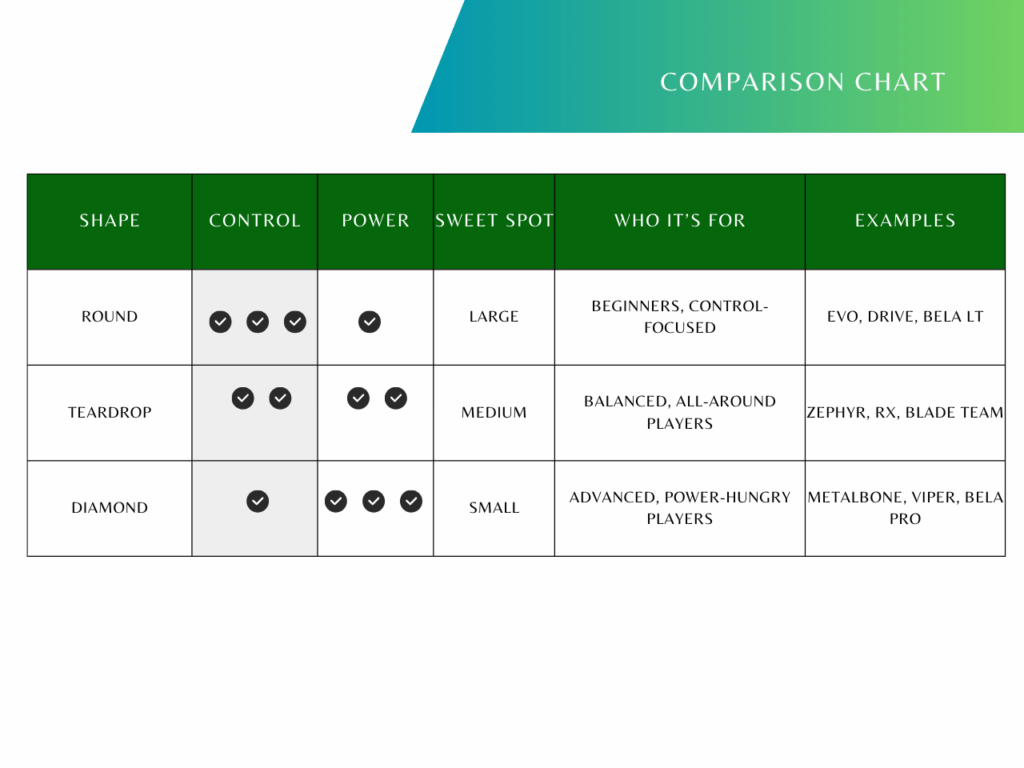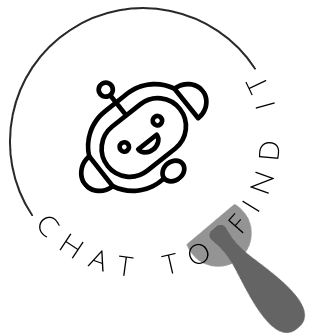INTRODUCTION
Too Many Types Of Padel Rackets
Nowadays, sports and technology go hand in hand—and padel is no exception. In fact, it’s the norm. Rackets come in many shapes, materials, and feature sets, making it harder than ever for players to choose the right one.
Players have different goals—some want more power, others control, and many just want to avoid sore arms after a match.
Brands respond by offering dozens of models tailored to various needs, skill levels, and playing styles. It’s a good thing—but only if you know what you’re looking for. This guide is here to help you cut through the noise.
What You’ll Get From This Guide
By the time you finish reading, you’ll understand what type of padel racket fits your level, your playing style, and your body.
No more guessing, you’ll know exactly what to look for.
Whether you’re shopping for your first racket or upgrading from a basic one, this 2025 guide will help you make a choice that actually improves your game (and makes padel more fun).
Quick Reference
Already have an idea of the Padel Racket you are looking for? Jump ahead and find recommendations based on your experience and playing style
PART 1: INSIDE THE RACKET: HOW DESIGN AFFECTS YOUR GAME
The Racket Shapes Decoded
The shape is one of the most important features that affects how you play padel. Here’s a simple breakdown—with hand-picked examples from top brands.
Round Shape
Best for: Beginners, casual players, and those who want maximum control and comfort.
- Large sweet spot, easier to hit clean shots
- Great for learning technique
- Often more arm-friendly
Choose this if: You’re new to padel, want fewer errors, or prioritize control over power, 3 of the best padel rackets with round shape you can find on Amazon U.S. are:
Teardrop Shape
Best for: players who want a mix of power and control.
- Balanced design, versatile for both offense and defense
Medium sweet spot, reliable and adaptable - Great for players improving their technique
Choose this if: You like to switch between attack and defense during a match, 3 of the best padel rackets with teardrop shape you can find on Amazon U.S. are:
Diamond Shape
Best for: Advanced or aggressive padel players who like to dominate with power.
- Small sweet spot, requires good technique
- Head-heavy for explosive smashes
- Designed for speed and offense
Choose this if: You love hitting hard and finishing points quickly, 3 of the best padel rackets with diamond shape you can find on Amazon U.S. are:

Core & Surface Materials
When you’re choosing a racket, what’s inside it (core) and what it’s made of (surface) can change how it feels when you hit the ball. But don’t worry, you don’t need an engineering degree to get it.
Let’s break it down into real world benefits, and show you which rackets fit each type.
Core Materials: EVA vs. Foam
EVA Rubber (Ethylene Vinyl Acetate)
- More durable over time
- More power for smashes and volleys
- Less rebound, better control
Best for: Intermediate to advanced players who want a longer-lasting, performance racket, 3 of the best padel rackets with EVA Core you can find on Amazon U.S. are:
Foam Core
- Softer feel, easier on the arm
- More bounce, helps generate power with less effort
- Great for comfort and injury prevention
Best for: Beginners, casual players, or anyone who values comfort over power, 3 of the best padel rackets with Foam Core you can find on Amazon U.S. are:
Surface Materials: Carbon Fiber vs. Fiberglass
Carbon Fiber
- More precision, stiff feel for controlled shots
- More durable, resists wear and tear
- Helps transfer more power to your shot
Best for: Intermediate or advanced players who want maximum control and responsiveness, 3 of the best carbon fiber padel rackets you can find on Amazon U.S. are:
Fiberglass
- More flexible—absorbs more vibration
- Softer contact with the ball
- Lower price, more forgiving on mishits
Best for: Beginners and intermediate players who want a good feel and smoother learning curve, 3 of the best fiberglass padel rackets you can find on Amazon U.S. are:

Feel the Difference: Comfort & Shock Absorption
if you’ve ever felt sore after a game or even worse, struggled with elbow or shoulder pain, your racket might be the problem. The racket can help absorb shock, reduce vibration, and make every match easier on your body.
What Makes a Racket Comfortable?
Here’s what to look for:
Comfort Feature | What It Does |
Foam Core | Absorbs shock and reduces vibration |
Low or Even Balance | Keeps the racket feeling light and stable |
Lightweight Frame | Easier to swing, especially for beginners |
Soft or Fiberglass Surface | Cushions impact, adds flexibility |
If you’re recovering from an injury or often feel arm pain after playing, prioritize comfort over power. Control and precision will come with time, but your health comes first.
Weight, Balance, and Swing
When people talk about how a racket “fels,” they’re really talking about three things: weight, balance, and maneuverability. Understanding how each one affects your game is crucial to picking a racket that works with you, not against you.
Weight: Light vs. Heavy
Weight affects everything from your swing speed to how quickly your arm gets tired.
Weight Class | Benefits | Best For | Examples |
Light (<360g) | Easier to swing, reduces arm fatigue | Beginners, women, kids, injury-prone | |
Medium (360–375g) | Balanced feel, mix of control/power | Most intermediate players | |
Heavy (>375g) | More power, better for smashes | Advanced, aggressive players |
Balance: Where the Weight Sits
Balance point = where the racket’s center of gravity is. This affects how it feels when swinging:
Balance Type | Description | What It Feels Like | Best For | Examples |
Head-Heavy | More mass toward the top | Powerful but harder to maneuver | Power hitters, advanced players | |
Even-Balance | Weight is centered | Best of both worlds | All-around players | |
Head-Light | Weight closer to the grip | More control, faster reactions | Beginners, control players |
Swing Speed & Fatigue
A light, head-light racket is easier to move quickly, especially at the net or during defensive shots.
A heavier, head-heavy racket delivers explosive power, but it also demands strength and good technique.
⚠️ If your arm gets tired fast or you’re recovering from injury, prioritize light and evenly balanced rackets.
PART 2: GETTING CLEAR ON WHAT YOU REALLY NEED
The 3 Things You Actually Want From a Racket
Forget the complicated specs and flashy marketing. When it comes down to it, every padel player (especially beginners or casuals) is looking for three simple things in a racket:
1. Control
You want to place the ball where you mean to. A racket with good control helps you keep shots in play, hit angles, and avoid unforced errors even if your technique isn’t perfect (yet).
2. Comfort
Padel should feel fun, not painful. The right racket reduces vibration, absorbs shock, and feels balanced in your hand. This is what keeps your arm, wrist, and shoulder happy especially during longer games.
3. Confidence
When your racket feels right, you play better. Confidence comes from using gear that fits your style, helps you improve, and gives you the mental boost to go for that volley or smash.
You don’t need to understand every technical detail, you just need a racket that gives you these three things. And that’s what this guide will help you find.
What to Avoid: Why “Pro” Rackets Aren’t for Everyone
We get it—those sleek, aggressive-looking rackets used by top players are tempting. If it’s good enough for a world champion, it must help you play better, right?
Not always. In fact, for most people, it can do the opposite.
What Makes a Racket “Pro-Level”?
- Extra stiffness for precision and power
- Head-heavy balance for aggressive shots
- Smaller sweet spots for more control
- Heavier weight to deliver smashing force
Sounds great… but only if you have perfect timing, technique, and strength.
Why Pro Rackets Can Backfire
Pro Racket Feature | What It Actually Means for Most Players |
Stiffer surface | Less forgiveness = more mishits |
Heavier weight | More fatigue and higher injury risk |
Smaller sweet spot | Requires perfect aim—frustrating for casual players |
Head-heavy balance | Slower at the net and harder to control defensively |
The Real Risk: Injury + Frustration
A beginner using a pro racket is like learning to drive in a Formula 1 car—it’s not just hard, it can be dangerous.
You might:
- Struggle with control
- Feel soreness in your elbow or shoulder
- Get discouraged by poor results
- End up wasting money on something that doesn’t suit your game
What to Do Instead
Start with a racket that:
- Has a soft core
- Is lightweight or medium weight
- Offers a round or teardrop shape
- Uses forgiving materials like foam and fiberglass
Once your control, strength, and technique improve, you can level up gradually to more advanced rackets. 3 great Pro rackets (not ideal for beginners) you can find on Amazon US are:
Understanding Your Play Style
Choosing the right racket starts with knowing how you play, or how you want to play. Your playing style affects which shape, weight, balance, and materials will help you perform at your best, there are three main player types. Pick the one that fits your personality and playing habits and see our recommended rackets for each.
The Defensive Player
You focus on consistency, placement, and making fewer mistakes. You love long rallies, well-timed lobs, and playing smart over flashy.
You need:
- A round-shaped racket
- Lightweight or medium weight
- Soft core (foam) for shock absorption
- Control over raw power
The Aggressive Player
You go for big smashes, fast volleys, and love dominating at the net. You play to win points fast, even if it means taking more risks.
You need:
- A diamond-shaped racket
Heavier weight or head-heavy balance - EVA core for power and precision
- Carbon fiber face for stiffnes and control
The All-Around Player
You mix defense and offense. You adjust your strategy depending on the opponent and value versatility over extremes.
You need:
- A teardrop-shaped racket
- Balanced weight and feel
- A blend of control and power
- Medium stiffness for adaptability
3 Top racket picks for all around players you can find on Amazon U.S. are:
Ask Yourself:
- Do I love placing the ball or finishing the point?
- Am I playing mostly casual games, or trying to improve and compete?
- Do I get tired easily or feel pain after games?
These questions help narrow down the racket that suits not just your skill level—but your personality and goals.
Play Style Summary Chart
Play Style | Key Traits | What to Look For | Top Racket Picks |
Defensive | – Plays safe – Focus on control & lobs | Round shape Foam core Lightweight or even balance | |
Aggressive | – Loves smashes – Fast volleys – Risk taker | Diamond shape EVA core Heavy/head-heavy Carbon fiber face | |
All-Around | – Mix of attack & defense – Adaptive play | Teardrop shape Medium balance Versatile weight & materials |
Still Unsure? Let My GPT Help You Decide
Need a little extra help choosing the perfect padel racket?
Visit my custom GPT, answer a few quick questions, and get personalized recommendations based on your skill level, goals, and style.
It’s fast, free, and tailored just for you. (This website contains affiliate links, including those to Amazon. As an Amazon Associate, I earn from qualifying purchases at no additional cost to you. We only recommend products we genuinely believe can add value based on user reviews, features, and performance.)



















